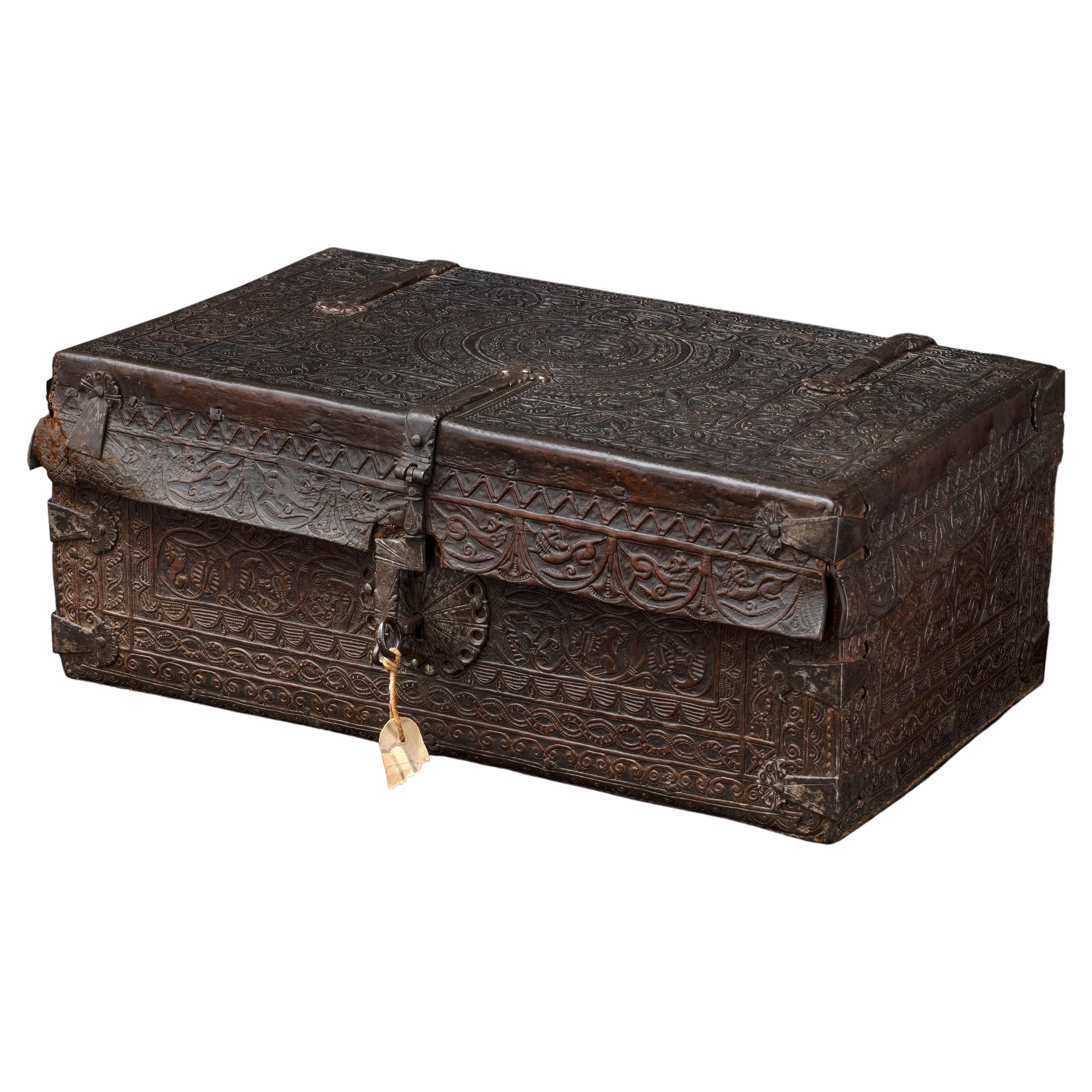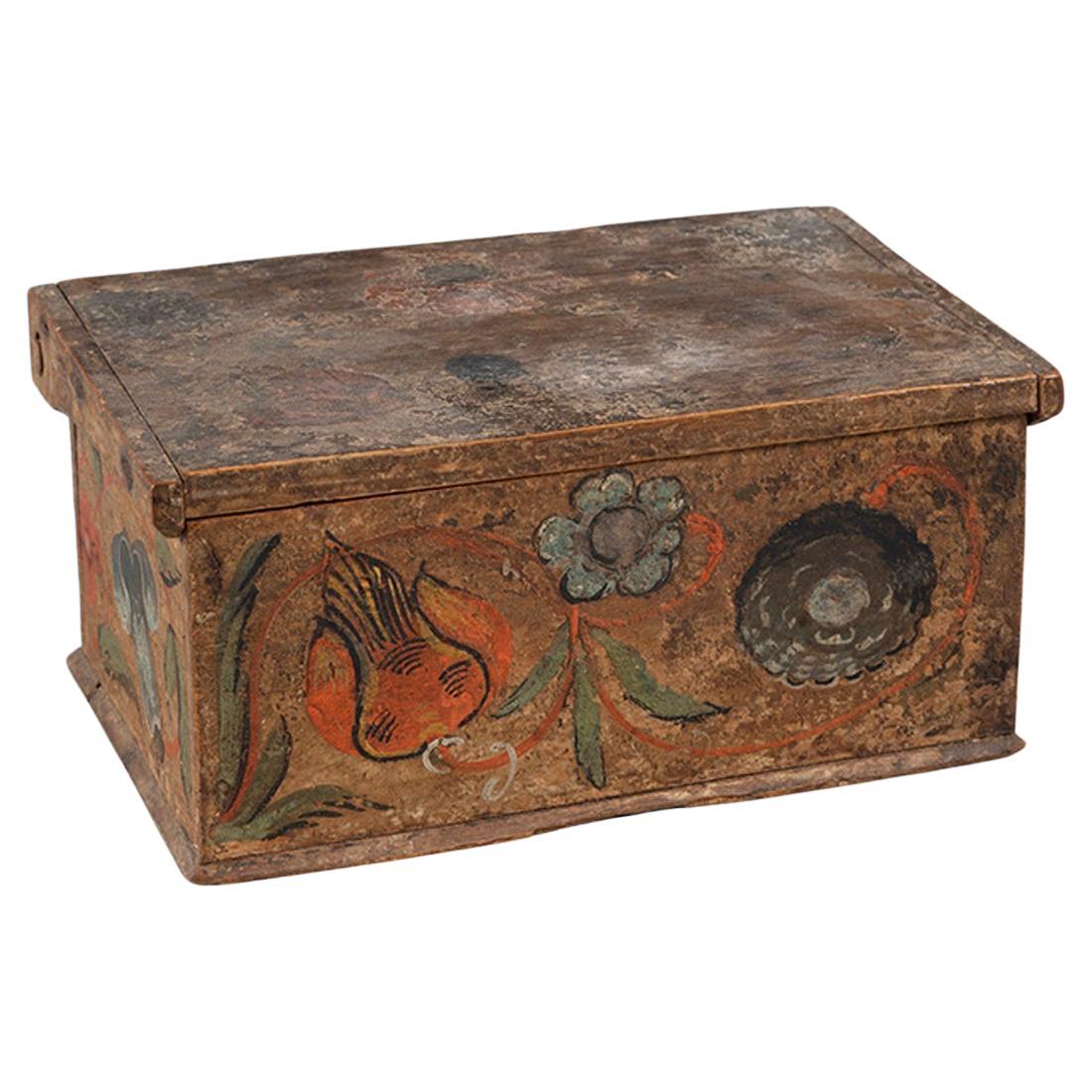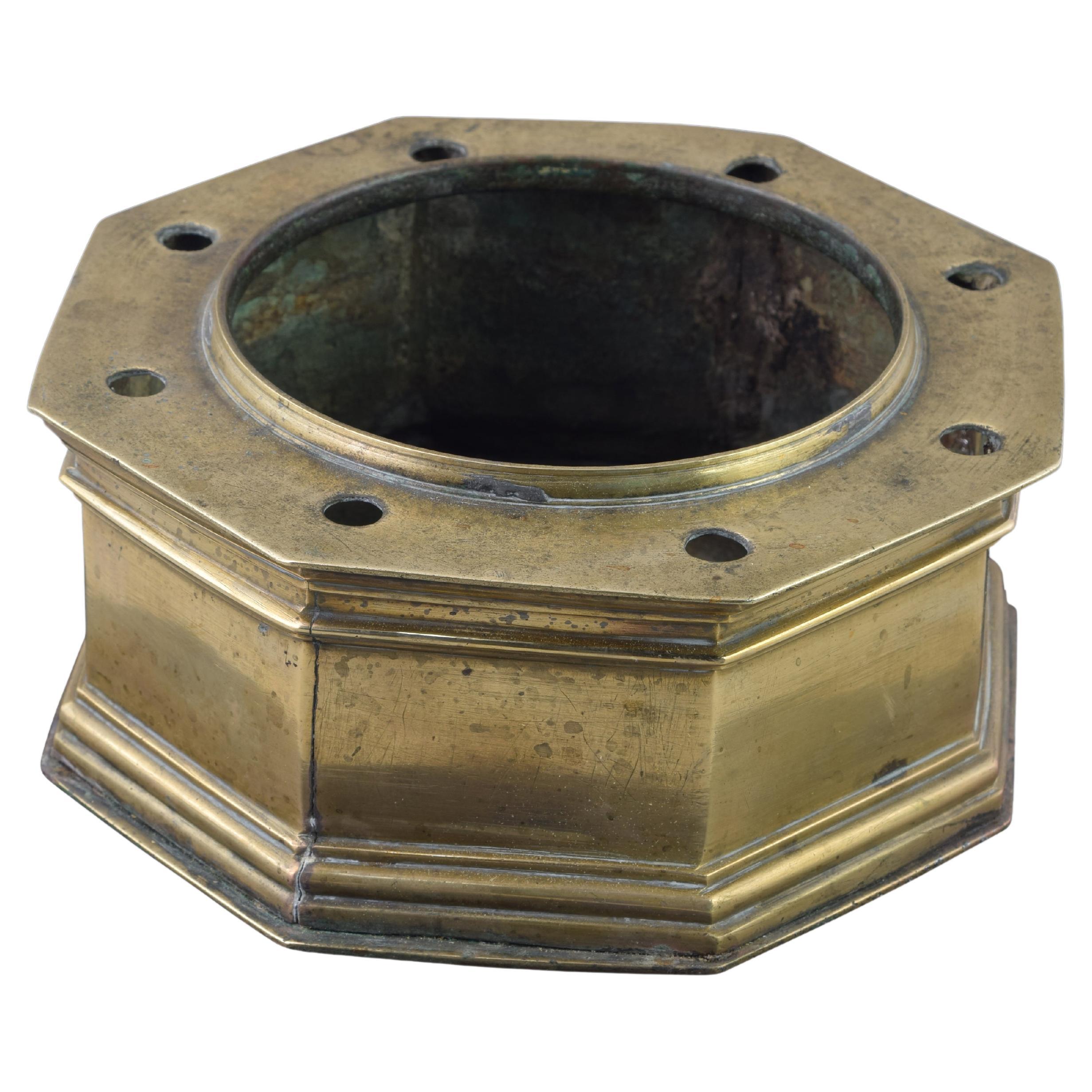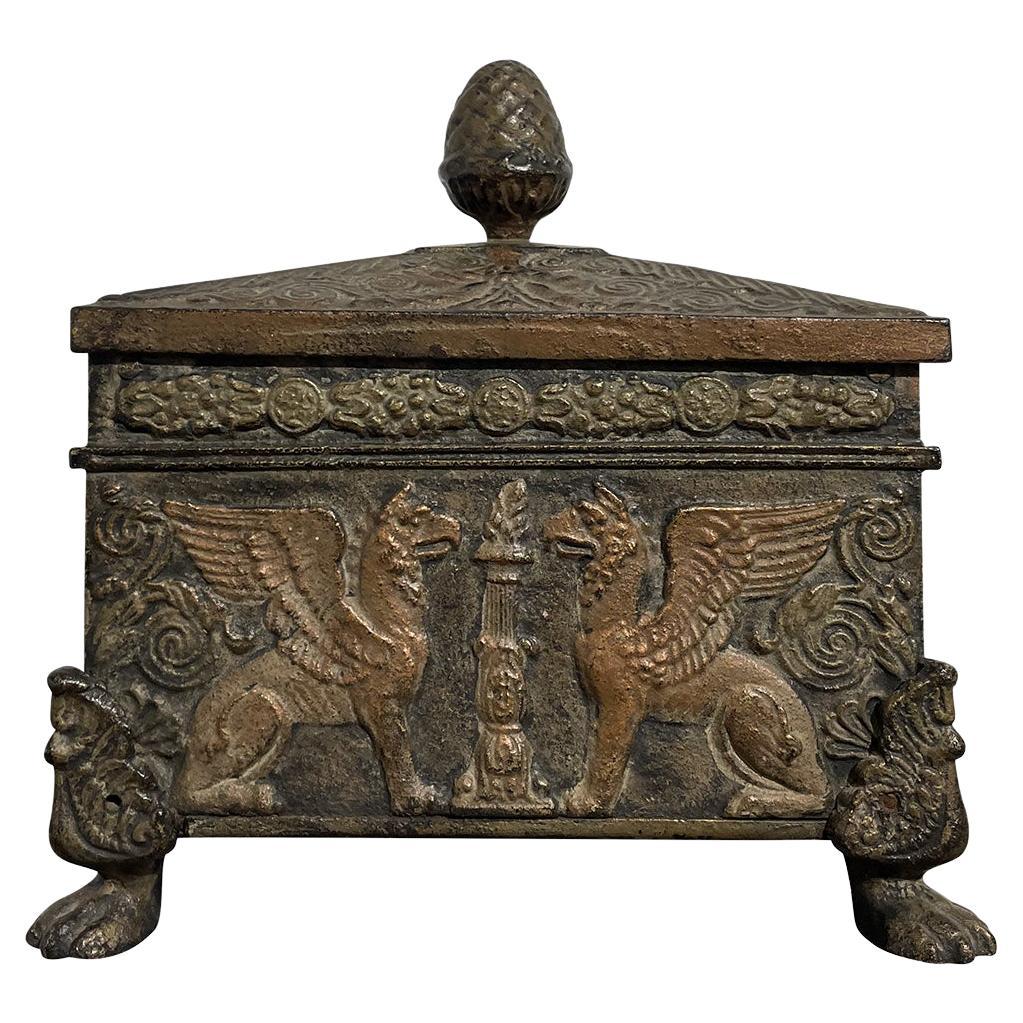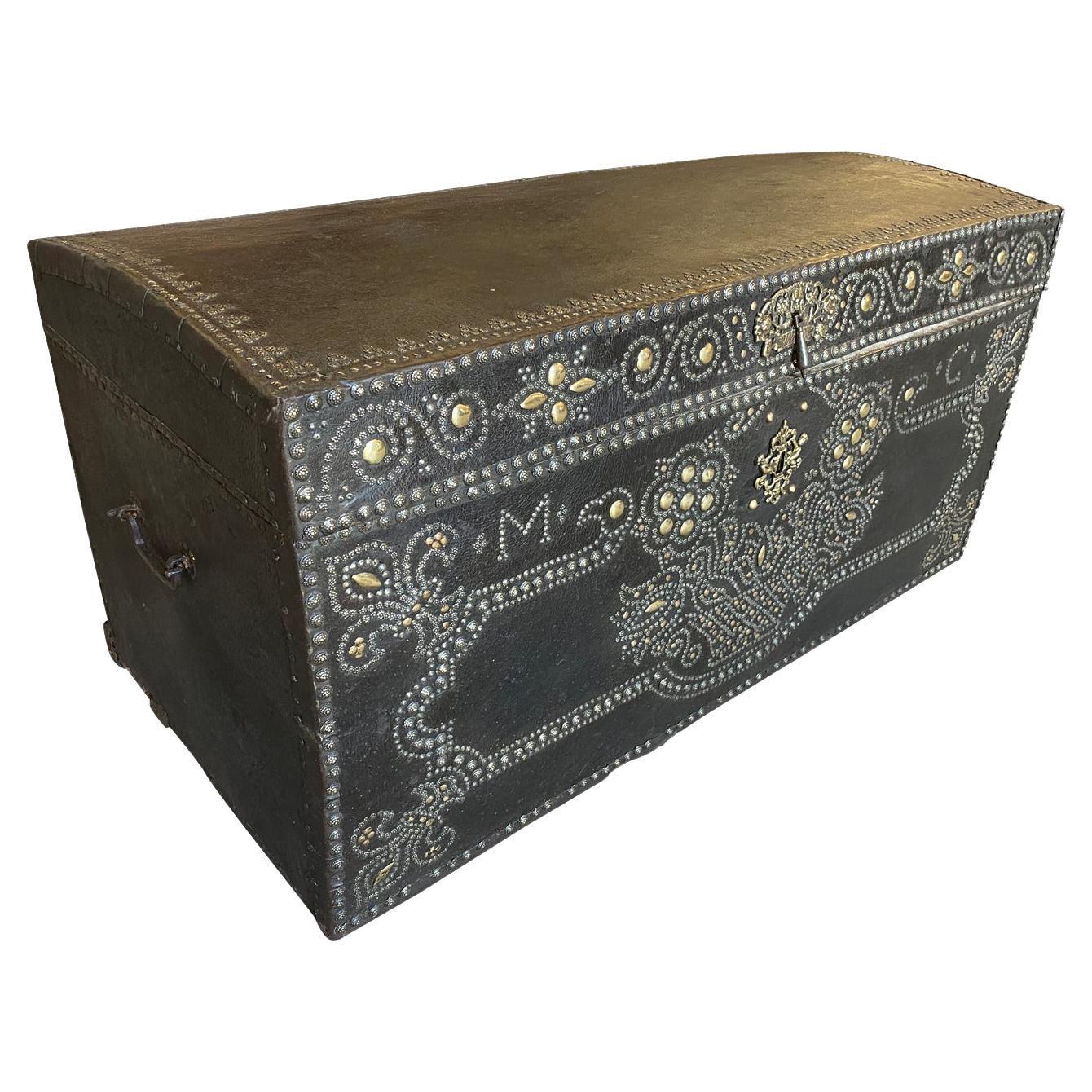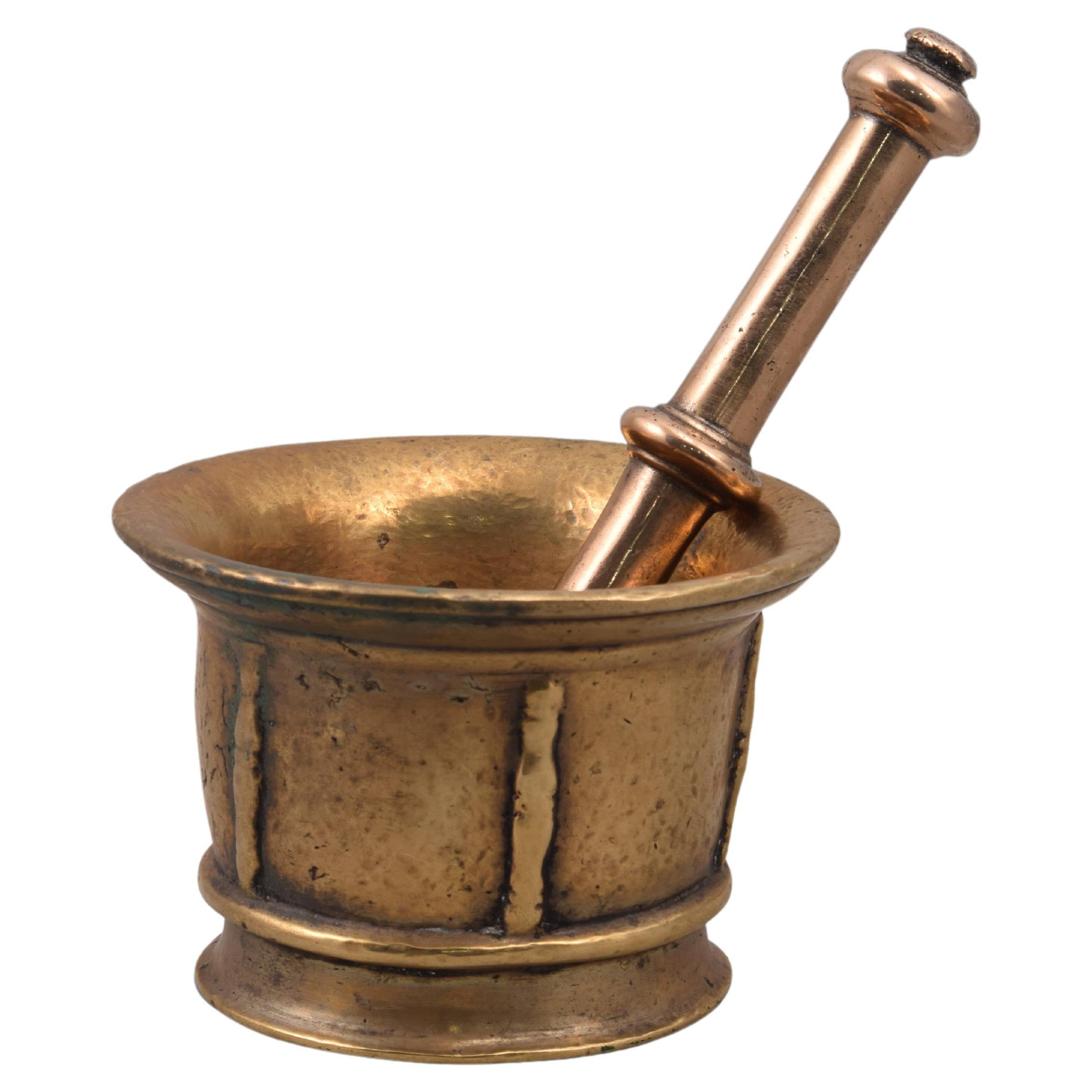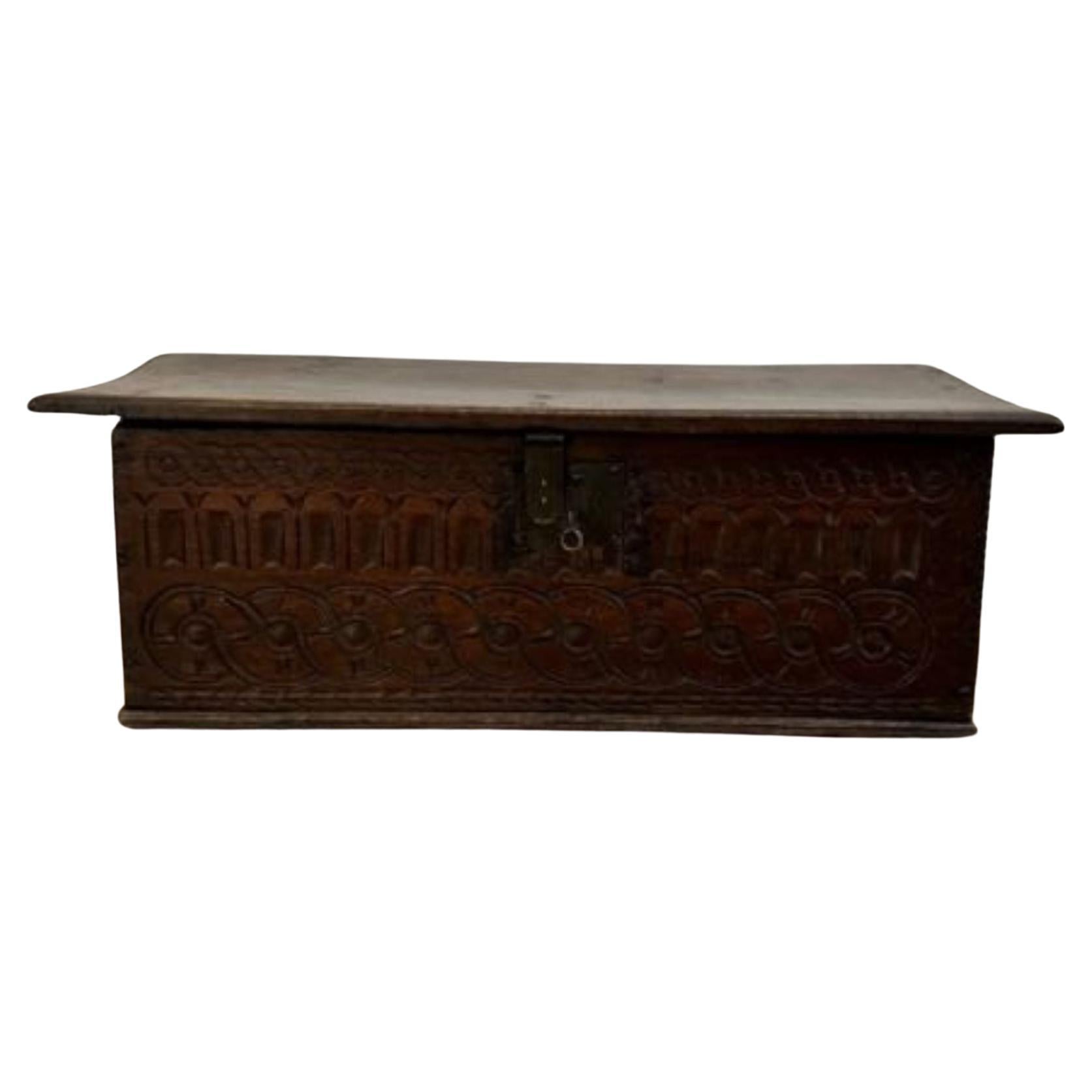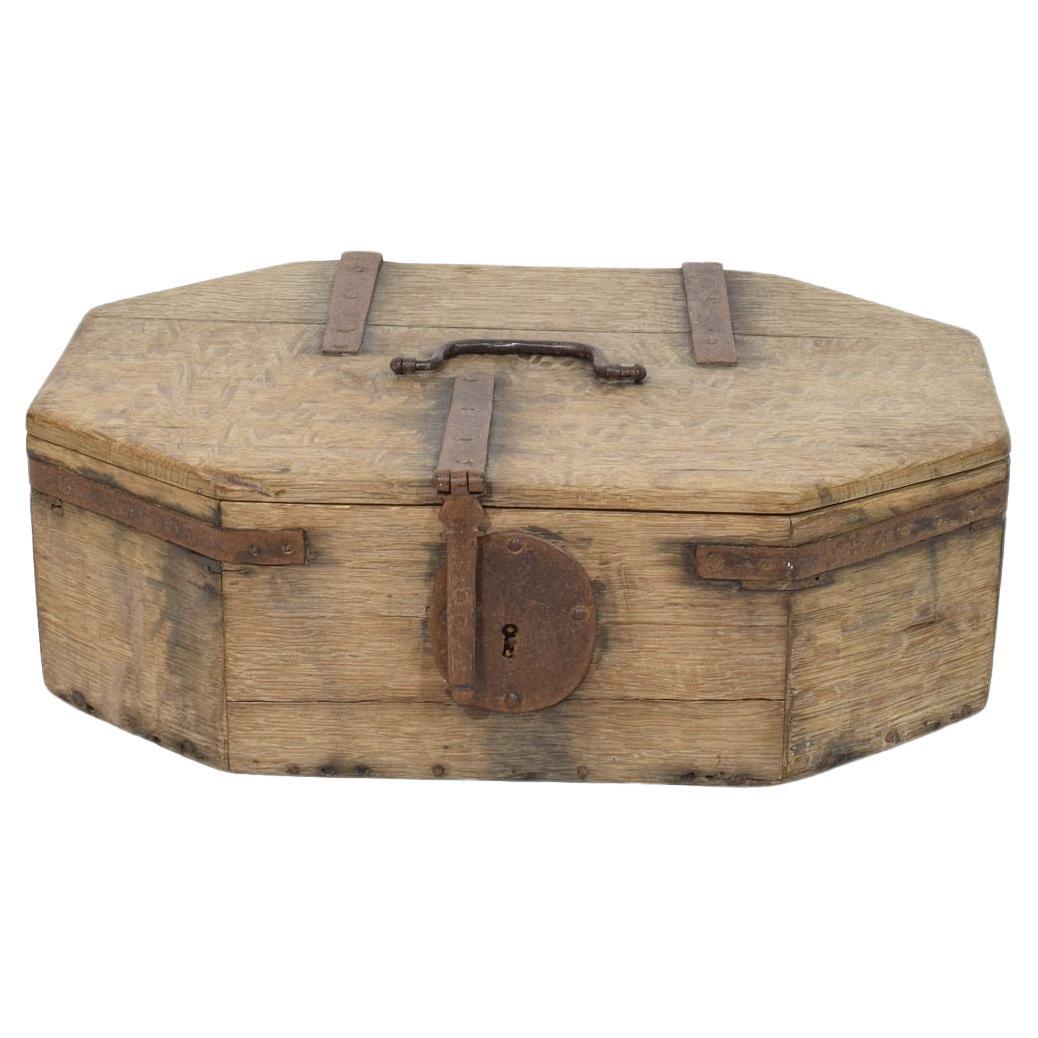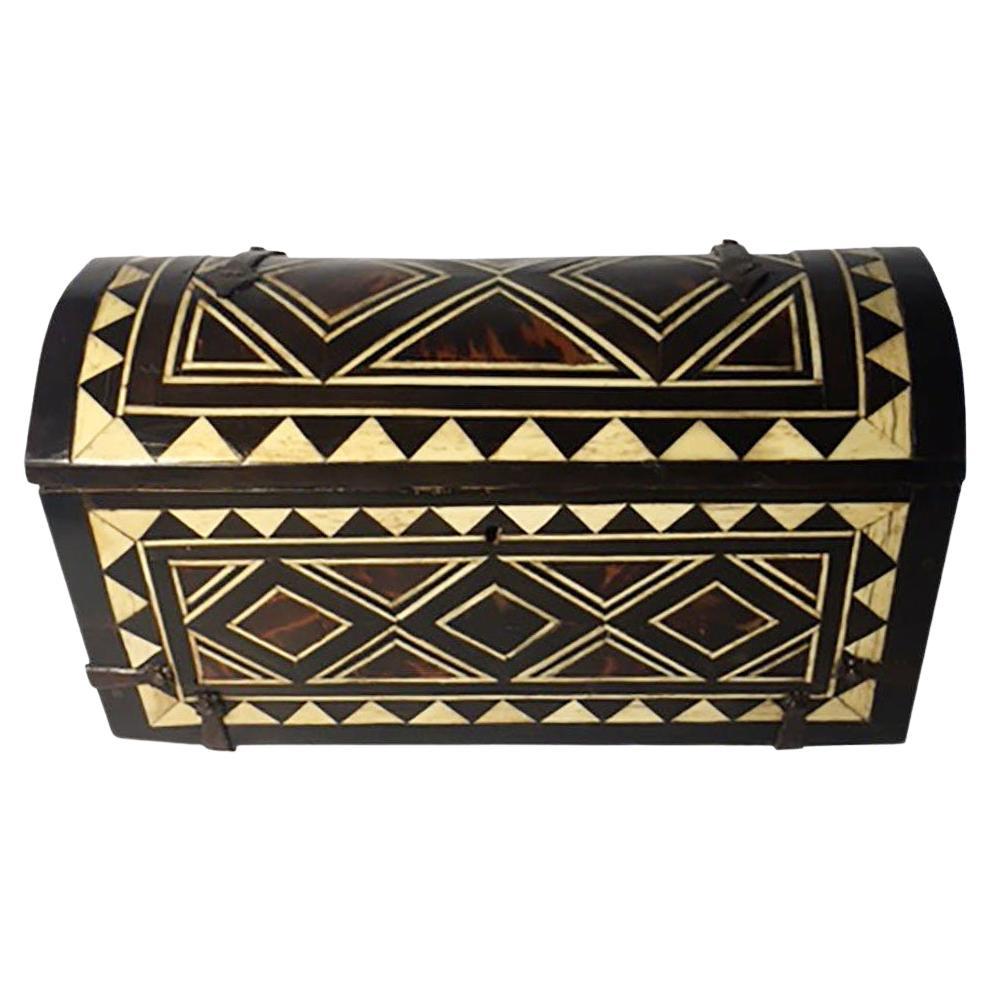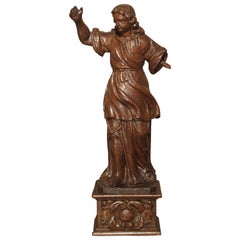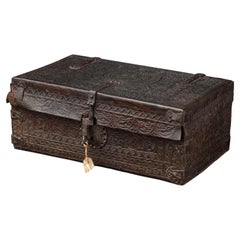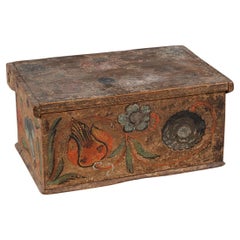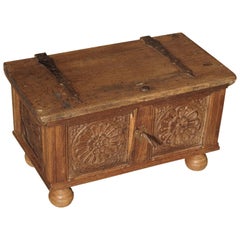
Small Antique Oak Table Trunk from Spain, 17th Century
View Similar Items
Want more images or videos?
Request additional images or videos from the seller
1 of 9
Small Antique Oak Table Trunk from Spain, 17th Century
About the Item
- Dimensions:Height: 11.88 in (30.18 cm)Width: 21 in (53.34 cm)Depth: 12 in (30.48 cm)
- Materials and Techniques:
- Place of Origin:
- Period:
- Date of Manufacture:circa 1680
- Condition:Wear consistent with age and use. Minor losses. Good condition with age separations, minor losses. Bun feet likely added later.
- Seller Location:Dallas, TX
- Reference Number:Seller: 917-29B1stDibs: LU90639896701
About the Seller
5.0
Platinum Seller
These expertly vetted sellers are 1stDibs' most experienced sellers and are rated highest by our customers.
Established in 1983
1stDibs seller since 2011
735 sales on 1stDibs
More From This SellerView All
- Antique Cast Iron Pharmacy Scale from Spain, 19th CenturyLocated in Dallas, TXA unique piece of scientific equipment, this antique cast iron scale would have been used in a Spanish pharmacy during the 1800s. The main cast...Category
Antique 19th Century Spanish Scientific Instruments
MaterialsIron
- Small 17th Century Carved Oak Statue from FranceLocated in Dallas, TXThis small French statue from the 1600s depicts a person in a two- piece robe with the bottom right hand portion of the robe attached above the knee. He is standing on a small carved...Category
Antique 17th Century French Figurative Sculptures
MaterialsWood
- Unusual Carved Walnut Wood Inkwell from France, Circa 1880Located in Dallas, TXHand-carved from walnut in France, circa 1880, this unusual inkwell features foliate and floral motifs. A flip-top lid adorned with a pair of bas relief flowers tops the central pen ...Category
Antique 1880s French Inkwells
MaterialsWalnut
- A Long 17th Century Carved Oak Baluster Leg Table from FlandersLocated in Dallas, TXAt over nine feet long, this sumptuous oak baluster leg table was hand-carved with an H-stretcher in Flanders, circa 1680. Long tables such as these...Category
Antique 17th Century Belgian Baroque Sofa Tables
MaterialsOak
- 18th Century Domed and Studded Leather, Brass, and Wood Trunk from FranceLocated in Dallas, TXBeautifully designed and highly portable, this French domed top trunk was constructed by hand with a wooden body enveloped in chocolate-colored leather. The trunk, which dates to the...Category
Antique 18th Century French Decorative Boxes
MaterialsMetal, Brass
- Pair of 17th Century Oak Armoire Doors from FranceLocated in Dallas, TXOriginally part of an antique armoire, these oak doors were hand carved in France during the 1600s. The beautiful doors are rectilinear in theme, with ...Category
Antique 17th Century French Doors and Gates
MaterialsMetal, Iron
You May Also Like
- Boiled Leather Trunk, Spanish, 17th CenturyLocated in Bruxelles, BELeather trunk Spanish, 17th century Boiled Leather, wood and iron Measures: 22 x 53 x 32 cm. Provenance : - collection Metz-Noblat, Château de Clevant, France Rectangular trunk of the form and size of a small suitcase with wrought iron hinges and lock-plate. Wood, covered with leather, cut and embossed with every surface of the thick cow hide covered in interlace, zoomorphic features. The construction method is boiled leather, often referred to by its French translation cuir-bouilli: a process used to change flexible, vegetable-tanned leather into rigid, moulded objects. For shaping of the vegetable-tanned leather, heat and moisture were used, as indicated by the term boiled leather. No written medieval sources describing the production of decorated cuir bouilli objects survive, so knowledge of the process relies on the important studies of the Scottish leather historian John William Waterer. A large range of methods, materials and techniques could be used in various combinations. The vegetable-tanned leather, made supple with moisture and heat, was stuffed, shaped and nailed to the rigid wooden coffer support. The stuffing material was probably modeled beeswax or stearin wax. To shape the leather, to create its topography, « Cushions » were made by lacing a thread through an awl hole and attaching the flexible leather and stuffing to the rigid wooden support on the bottom. Then the decoration was done: lines were incised through the upper layer of the leather (epidermis) with different thicknesses of knives or needles. Contours were created with deep v-shaped cuts, decoration with thin incision and final details with a needle point. For the incision and pouncing stage, the leather was probably kept heated and moistened for suppleness. Once dry, the leather would be hard and rigid. the saturated leather is worked over a form, possibly even damp sand, with the pattern shaped using bone or wooden tools. Compare to metal, leather was lighter and it offered protection from cuts and punctures. Cuir bouilli objects were produced by specialist leather workers and needed skillful craftsmanship. The surface is filled with roundels shaped foliages enclosing animals, lions and peacocks. The foliate arabesques creating a vegetal connection tweet the animals create the impression of a lush verdant space . The vegetal pattern here employed in combination with geometrical pattern came from the pre-islamic artistic traditions of the Byzantine and Sasanian empires. An aspect of Islamic geometry Is the basic symmetrical repetition and mirroring of the shapes that create a sense of harmony. The decoration of this truck is inspired by the islamic « arabesque » a form of vegetal ornament composed of spirals, intertwining plants and abstract curvilinear motifs. An arabesque character is given to the birds of the decorations through extreme stylisation. This arabesque maintained the classical tradition of median symmetry, freedom in Detail and heterogeneity of ornament. The presence of the peacocks is a paradisiacal allusion: in popular Islamic literature they were among the original inhabitants of the garden of Paradise expelled with Adam and Eve. Peacock as a decorative motif may have originated in the West, despite their eastern provenance. There was an ancient belief that the flesh and feathers of peacock do not decay. This led to the peacock becoming a christian symbol for Christ’s resurrection. Renowned for their decorative wall hangings, seventeenth-century Spanish leatherworkers also produced utilitarian objects, such as this trunk. A similar trunk is on display at the Metropolitan museum of art ( 09.158.1). Related literature : Davies L. 2006. Cuir bouilli. Conservation of leather and related materials, 94-102, Oxford: elsevier Butterworth-Heinemann Grabar, Oleg. The Mediation of Ornament. Princeton: Princeton University Press, 1992 Gabriela Germana Roquez, "El mueble en el Peru en el siglo XVIII...Category
Antique 17th Century Decorative Boxes
MaterialsIron
$13,782 Sale Price30% Off - 18th Century Mexican Chest from New SpainLocated in Marbella, ESMexican chest. New Spain, 18th century. In polychrome wood. Slight paint losses on the lid. Measurements: 7 x 16 x 6.5 cm. Wooden chest from the vicerega...Category
Antique Mid-18th Century Mexican Decorative Boxes
MaterialsWood
- 17th Century English Leather Covered Knife Box Converted To a Letter BoxLocated in San Francisco, CA17th century leather knife box converted to a letter box with original brass hardware, sitting on brass ball feet. Fitted interior lined with 18th century silk fabric. In very good...Category
Antique 17th Century European Decorative Boxes
MaterialsBrass
- Bronze inkwell. Spain, 17th century.Located in Madrid, ESBronze inkwell. Spain, 17th century. Inkwell made of octagonal bronze with eight small holes and one larger one in the center of the upper part that has a flat base and decoration o...Category
Antique 17th Century Spanish Baroque Inkwells
MaterialsBronze
- 19th Century Brown-Black German Small Empire Iron Coffer, Antique Table DecorLocated in West Palm Beach, FLA dark-brown, black antique German coffer made of hand crafted iron, particularized with griffins, torchères and tendril motifs on the wall and pinecone mode on the lid, in good condition. The small detailed decor piece represents the Empire time period...Category
Antique Early 19th Century German Empire Decorative Boxes
MaterialsMetal, Iron
- Exceptional French 17th Century Marriage TrunkLocated in Atlanta, GAAn exceptional 17th century Marriage Trunk - Malle - from the Provence region of France. Soundly constructed from wood and clad in leather. Beautifully ...Category
Antique 17th Century French Trunks and Luggage
MaterialsLeather
Recently Viewed
View AllMore Ways To Browse
Antique Oak Trunk
Small Decorative Antique Spanish
Antique Spanish Trunk
Iron Dove
Dove Carving
Spanish Escutcheon
Antique Trunk Accessories
Wrought Iron Strap Hinges Antique
Antique Trunk 17th
Small Spanish Trunk
Ironstone Mold
Antique Ironstone Mold
Antique Ironstone Molds
Chinese Vintage Boxes
Stone Carved Box
Vintage Chinese Boxes
Vintage Chinese Box
Small Trinket
